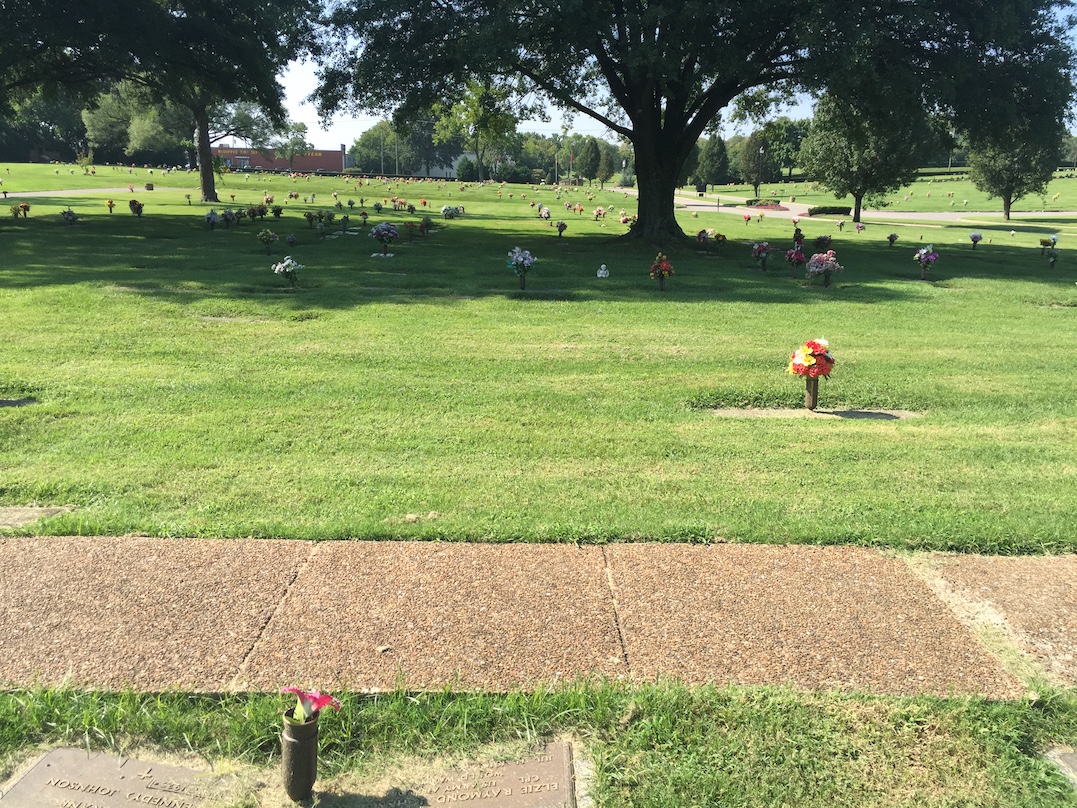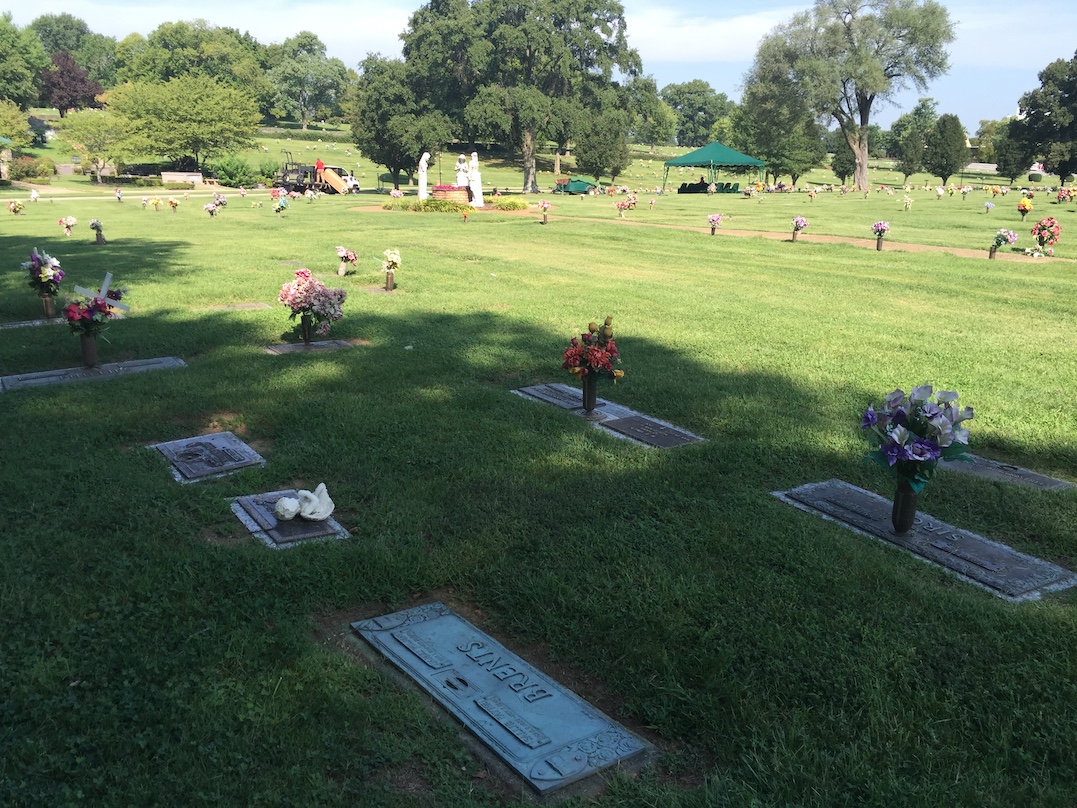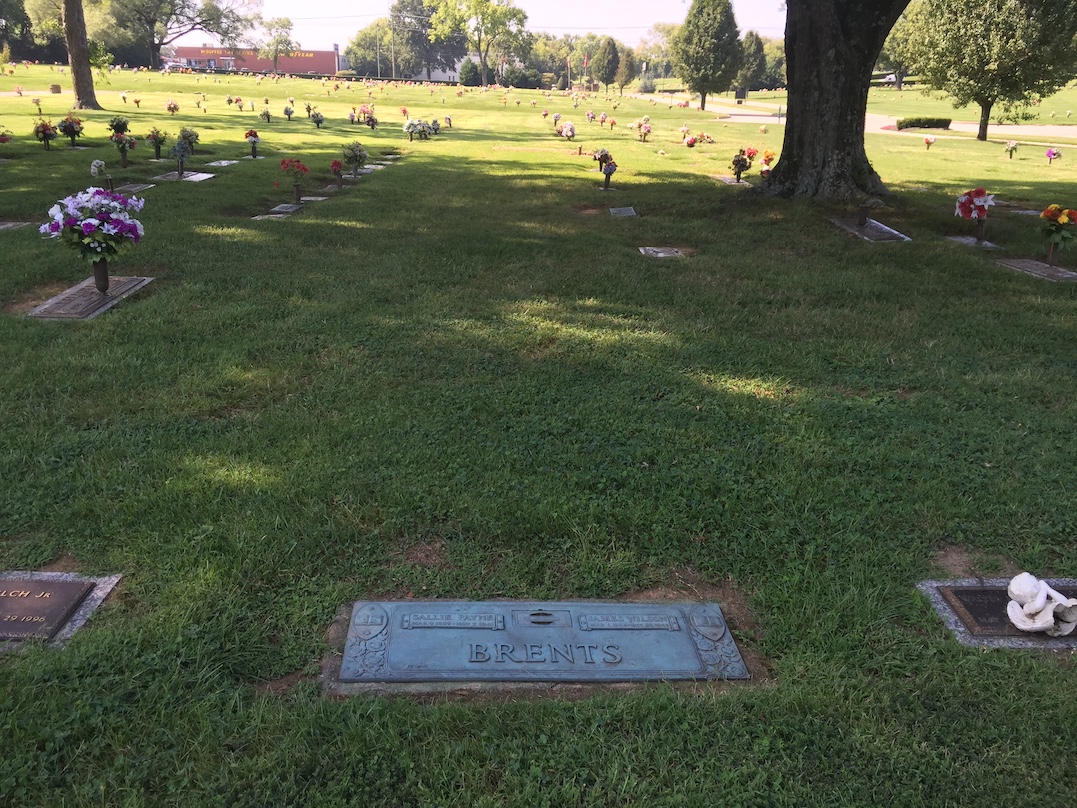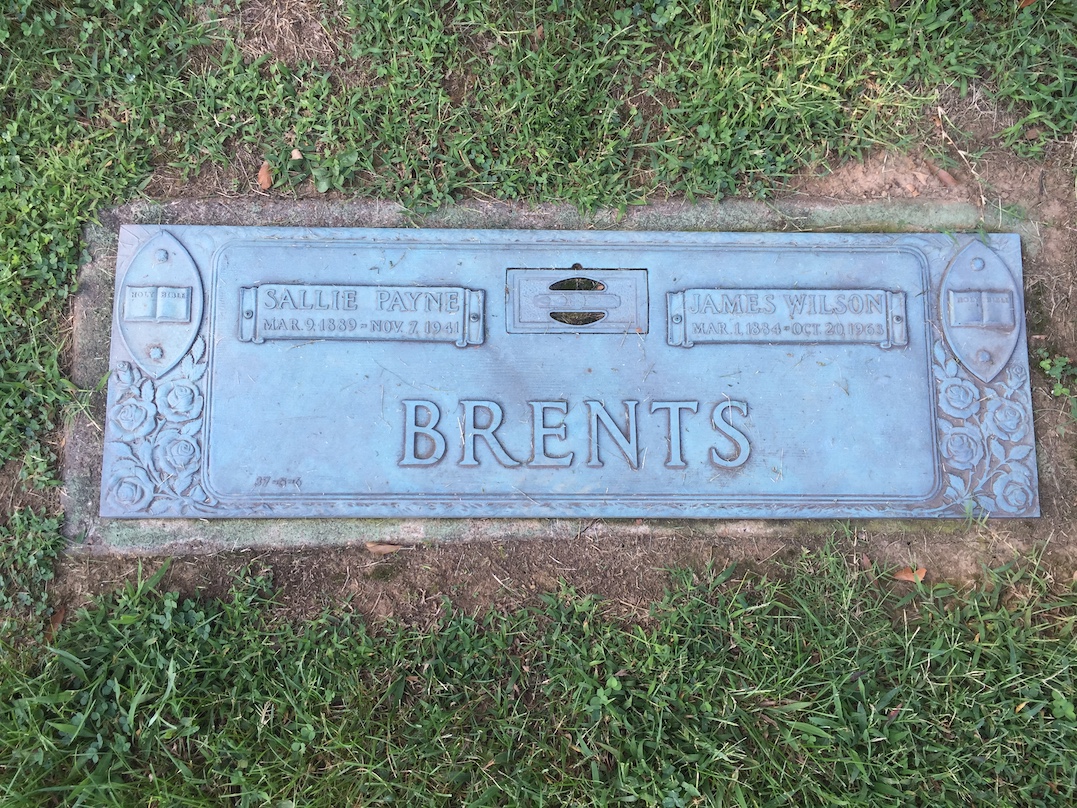James Wilson Brents
1884-1963
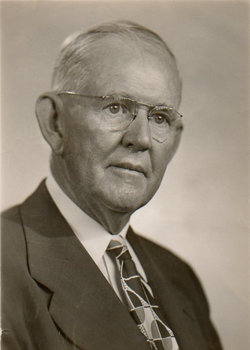
Source: Find-A-Grave
![]()
The Life of J.W. Brents
James Wilson "Jim" Brents was born May 1, 1884, in Petersburg, Tennessee. His parents were Wilson P. Brents (1843-1912) and Victoria Stillwell Brents (1847-1932). His paternal grandfather was James Monroe Brents (1809-1883), the elder brother of Dr. T. W. Brents (1823-1905), the distinguished Tennessee preacher and educator and thus, Jim's great uncle.
At the age of 21, Jim was baptized by Allen B. Barret (1879-1951), the founding president of what is now Abilene Christian University. He attended Georgia Robertson Christian College in Henderson, Tennessee, from 1905 to 1907. A. G. Freed (1863-1931) was the college president at the time. In his second year there, young Brents began preaching in DeQueen, Arkansas. After completing his work in Henderson, he shifted to Nashville to attend Nashville Bible School, studying under David Lipscomb (1831-1917).
In 1910 he attended Trinity University in Waxahachie, Texas. While there, he met Sally Davis, a fellow student. They fell in love and were married the following year. For the next several years, the new family was involved in evangelistic work, mostly west of the Mississippi River. Jim preached in Texas, Missouri, Oklahoma, and as far west in Colorado during this time.
Consider what makes for a "good" gospel meeting. While living and preaching in Italy, about an hour south of Dallas, Texas, in 1918, he made his way back to south-central Tennessee for a short meeting in the small town of Dellrose. Upon returning home, he sent a brief message to the Gospel Advocate describing the effort as a "good meeting." (Gospel Advocate, July 25, 1918, 705.) What makes a "good meeting?" Besides the 1500 miles of travel to and from home, there was only one baptism in that meeting, a thirteen-year-old boy by the name of Hubert Allen Dixon (1904-1969), who later made a gospel preacher and president of what is now Freed-Hardeman University.
In December of 1920, the Brents moved back east, settling in Athens, Alabama. The work was very weak there as most congregations in the region had gone with the digression around the first of the century. Though based in North Alabama, he continued his travels back to Texas and other places for meetings. In 1921 they moved to Springfield, Missouri, to work with the Broadway & Madison church of Christ. While based there, he continued to venture far and wide preaching the unsearchable riches of Christ.
One of Jim's good friends from his days at GRCC was Brodie Hardeman (1874-1965). In 1922, above forty of the churches in Nashville, Tennessee, worked together to organize the great Hardeman Tabernacle Meetings at the Ryman Auditorium. Each day thousands poured into the arena to hear the sermons from the nationally acclaimed N. B. Hardeman. Reporters from The Tennessean and the Nashville Banner painstakingly wrote every word and published it in the newspaper. J. W. Brents suggested that the transcriptions of those sermons be printed in book form. Today, the five volumes of the Hardeman Tabernacle Sermons are standards in most preacher's libraries.
In August 1924, the Brents moved to Topeka, Kansas. Quickly the brethren far and near relied on his assistance as he drove hundreds of miles weekly to preach out in remote locations, often reporting to the brotherhood papers of the sheer volume of his activity and begging for assistance in the region. He was based there until July of 1925 when the family moved back to Henderson, Tennessee, to study some at Freed-Hardeman College. The gospel of Christ drove him. When not studying, he preached mission meetings in Tennessee, Kentucky, Alabama, Arkansas, Texas, and Missouri.
Being supported financially by the brethren, in the fall of 1926, he began doing mission work again west of the Mississippi. Initially, he moved to Canyon, Texas, to preach. After a year there, he moved south to Idalou, Texas. In 1928 he shifted north to Weatherford, Oklahoma. Up to this point in time in his preaching career, he had not based himself in a location where he could work with just one congregation, as located preachers were very scarce up to that point. But this was soon to change.
In June 1929, the Brents family moved to Muskogee, Oklahoma, to work with the Spaulding Boulevard church of Christ. With a membership of around 450, it was possible to be fully supported by the congregation, thus becoming Jim's first located work. That said, his work was by no means limited to the group. He made strong efforts toward evangelizing among the black and Indian populations in the area. He raised money to provide thousands of copies of the New Testament for distribution among the Indian nations.
In September 1930, he invited Marshall Keeble (1878-1968) to come to Muskogee to help build a work among the black people of the area. Keeble, being fully supported at that time by A. M. Burton (1879-1966) to evangelize had come off one of his most successful campaigns in Fort Smith, Arkansas, where he, being assisted by G. P. Bowser (1874-1950), baptized eighty-six souls into Christ. Brother Brents made the "Macedonian call" of sorts to see what might be accomplished in Muskogee. Brother Keeble was there for a two-weeks effort that led to "two hundred and four baptisms among the blacks, one Indian, and a number of white people," (Firm Foundation, October 27, 1931, 7.) and was said to be the best results of his entire career.
Later, J. W. Brents said, "I consider my efforts in Muskogee the outstanding work of my life." (FF, March 22, 1932, 7.) He strengthened the church, baptizing many, and assisted the brethren in building a new auditorium that could seat 700. However, what happened so often with him is that success in a work meant that departure to other fields was close. For, by September, the family moved to Jackson, Tennessee, to work with the Central church. Being there only a year, in January 1934, the family moved to Nashville, Tennessee, where he entered once again, full-time evangelistic work, this time with the Twelfth Street church of Christ. The next year he moved to Springfield, Tennessee, to be nearer a sister who had health problems. During this time, he still made trips into Nashville but also preached for the churches at Springfield and Coopertown.
At the end of 1937, he wrote to the Advocate of a most eventful year. (GA, November 11, 1937, 1077.) He explained that he did preaching in Florida, West Virginia, Chicago, Illinois, and as far north as Manitoba and Winnipeg, Canada. Other missions were in St. Louis, Missouri, several meetings in "Old Kentucky," a visit to the "Lone Star State," South Carolina, and closing the year back in Florida. Similar travels were planned for the following year. His visit to the Carolinas initiated a mission focus that continued the remainder of his life.
A similar report was made at the end of 1938. (GA, December 9, 1938, 1152.) In it, he mentioned starting the year with a meeting in a tobacco barn near his home in March. Then, he reported on meetings in Missouri, Florida, Indiana, Texas, and South Carolina. He devoted a good bit of space to talk of the fledgling efforts in South Carolina, describing it as a "long-neglected state."
On November 7, 1941, Jim and his children were shocked at the passing of wife and mother, Sallie Payne Davis Brents. Her obituary expressed that she was born in Lebanon, Tennessee, on March 9, 1888. At a young age, she was left an orphan but was raised by H. N. C. Davis, a lawyer in Milford, Texas. She was educated at a Presbyterian School in Milford but also attended Trinity University in Waxahachie, where she met and married Jim. She taught school for several years and was the mother of ten children, three of whom died in infancy. (GA February 19, 1942, 191.) Together they raised six daughters and one son.
By 1942, J. W. Brents was conducting as many as ten mission meetings in the Carolinas annually as well was gospel meetings in many other locales. In the mid-1940s, he began teaching at the Nashville Christian Institute, a school primarily devoted to the education of young blacks. Directing the Bible Department starting in 1947, he worked closely with his good friend Marshall Keeble, who was president; and assisted in the school's building many years. In October 1946, he reported that the school had 350 boarding and day students. (GA, October 10, 1946, 974.) Over the seventeen years of his involvement, he helped to train over 800 preachers of the gospel. Other young men he baptized and helped train as preachers and church leaders were: Texas preacher, Robert Vincent Hamilton (1915-2002); Raymond C. Kelcy (1916-1986), also from Texas, who preached, authored several books, and served as director of the Bible Department of what is now Oklahoma Christian University; and Henry Lloyd Lawhon (1906-1922) Springfield, Missouri 1920 (ministered in Oklahoma, Arkansas, and Missouri).
In 1943, he married Ruth Isham of Webster City, Iowa. It was also around this time that an annual lectureship for the Carolinas began, alternating annually between the two states. He reported in April that he was involved with his 30th mission meeting in the Carolinas. (GA, April 22, 1943, 376.)
From 1944 to 1947, Jim preached for the Otter Creek church of Christ in Nashville, at that time, a small and struggling work. He preached for them regularly while teaching daily at NCI. But the summers were always dedicated to mission work in the Carolinas. While in the Nashville area, Jim developed a close relationship with the preacher for the Central congregation, A. R. Holton (1891-1964). At Jim's encouragement, Holton developed a passion for evangelizing in the Carolinas. They traveled together during the summers to preaching in meetings all through the two coastal states. In 1952, the two laid plans for the first annual Blue Ridge Encampment. In conjunction with the West Asheville church of Christ in Asheville, N. C., the idea was for a Christian family retreat to take place at a Y. M. C. A. camp in the small N. C. town of Blue Ridge the week of August 23-29, 1952. The first guest speaker was C. R. Nichol (1876-1961) of Clifton, Texas. The annual event was conducted for many decades, blessing the lives of many Christian families from all around the world. Through the years, Jim was instrumental in planting 74 churches of Christ in the Carolinas alone.
J. W. Brents produced a volume through Firm Foundation Publications entitled, The Great Day of Pentecost in 1959. It was touted as the only exhaustive treatment of the day of Pentecost in print, proclaiming Brents as a "scholar and prince among preachers." (FF, December 1, 1959, 763.)
Jim finally left local work as he got older, but he hardly slowed down. The family attended the University congregation at David Lipscomb, but he continued to teach at NCI and conduct mission trips to the Carolinas as long as he could.
Brother Brents died on October 20, 1963, of a heart attack. He was 79 years of age. The funeral was conducted at the University church of Christ with Henry Clyde Hale (1901-1979) officiating. Burial followed at the Woodlawn Cemetery, where many great leaders in the Restoration Movement have been laid to rest.
-Scott Harp, (Printed in Gospel Gleaner, July, 2020)
www.TheRestorationMovement.com
![]()
J.W. Brents
We were stunned by the announcement of the death of J. W. Brents on October 20, 1963. Jim Brents was one of the best of men. Simple and sincere in all of his ways, he had a tremendous way with all of his friends.
Just after I had moved to Nashville, he called at my office one day. He had just suffered the loss of his wife. Brother Brents was later married to the one who now is left to mourn his death. Brother and Sister Brents were great examples of true loyalty to one another and to God.
On this trip to my office, Brother Brents asked me if I would like to see one of the greatest opportunities for mission work in all of the United States. He said that overnight by train from Nashville he could take me to the heart of the states of North and South Carolina. It was here in the Carolinas as a boy that he sold Bibles and while there he observed that there were few churches of Christ in these states. He made a resolution as a boy that he would do something about planting the New Testament church in these two states. He told me of the work done by T. H. Burton at Union, S. C. He told me of the interest of A. M. Burton in supporting this work. We made plans to make a survey of North and South Carolina. Leaving Nashville one night aboard a Pullman on the old Tennessee Railroad, we ate lunch the next day in Asheville, N. C. That afternoon we baptized a man in the swimming pool at the YMCA. For about ten days we visited the few congregations in the two states. Most of these congregations were worshiping either in the living room of a home or in a rented hall.
Central church of Christ in Nashville, where I preached at that time, enabled me to do something toward making known to the brotherhood the opportunity in these two states. J. W. Brents, in seventeen years of teaching at the Nashville Christian Institute, spent each summer in mission meetings in these states. Before that time he held many meetings throughout North and South Carolina. The monument to J. W. Brents will be the thriving churches of Christ now existing in North and South Carolina.
One day while visiting in Asheville with Brother Brents, I suggested that Blue Ridge Regional YMCA had a wonderful equipment and grounds for a summer meeting. We visited the Blue Ridge YMCA just a few miles out of Asheville and found that they would be delighted to give us access to all their buildings, dormitories, classrooms and the one thousand acres of ground to use for an encampment, a nationwide gathering of members of the churches of Christ. This work has continued. Ira North has been a great influence in carrying on the work of the Blue Ridge Encampment, and now J. M. Powell, of Chattanooga, Tenn., is carrying on in a great way the work that we began. The purpose of this encampment was to bring brethren to this area in order that they might see firsthand the great opportunity.
The churches in Nashville were astonished to find this great open field within a day's drive of the city of Nashville. All of middle Tennessee, full of churches with strong congregations, saw the need and the responsibility that was theirs in reference to advancing the cause of New Testament Christianity at their own door. It was one of the strangest things that has happened, I think, in our brotherhood that for so long we neglected this great open door so close to some of the strongest churches in our brotherhood. Barton W. Stone and Alexander Campbell preached in North and South Carolina, but the result of these first efforts was all swept away by digression. We discovered that these two states were open to evangelism.
And may I say to our brethren everywhere that most of all these two states are still open for evangelism. Let us build a greater monument to J. W. Brents and his interest in these two states by beginning this very year to send men to North and South Carolina for meetings and preachers for regular work where needed. With just a little help from the churches in Tennessee the great churches in North and South Carolina can be rallied to evangelistic programs that will astonish us at the results.
Are there not churches in the United States that will agree to send an evangelist to these two states next summer? Let us start now to build an even greater monument to J. W. Brents and most of all to give glory to Christ and his church.
-A.R. Holton, Gospel Advocate, November 21, 1963, p.745-746
![]()
Preachers Who Have Preached Over 40 Years
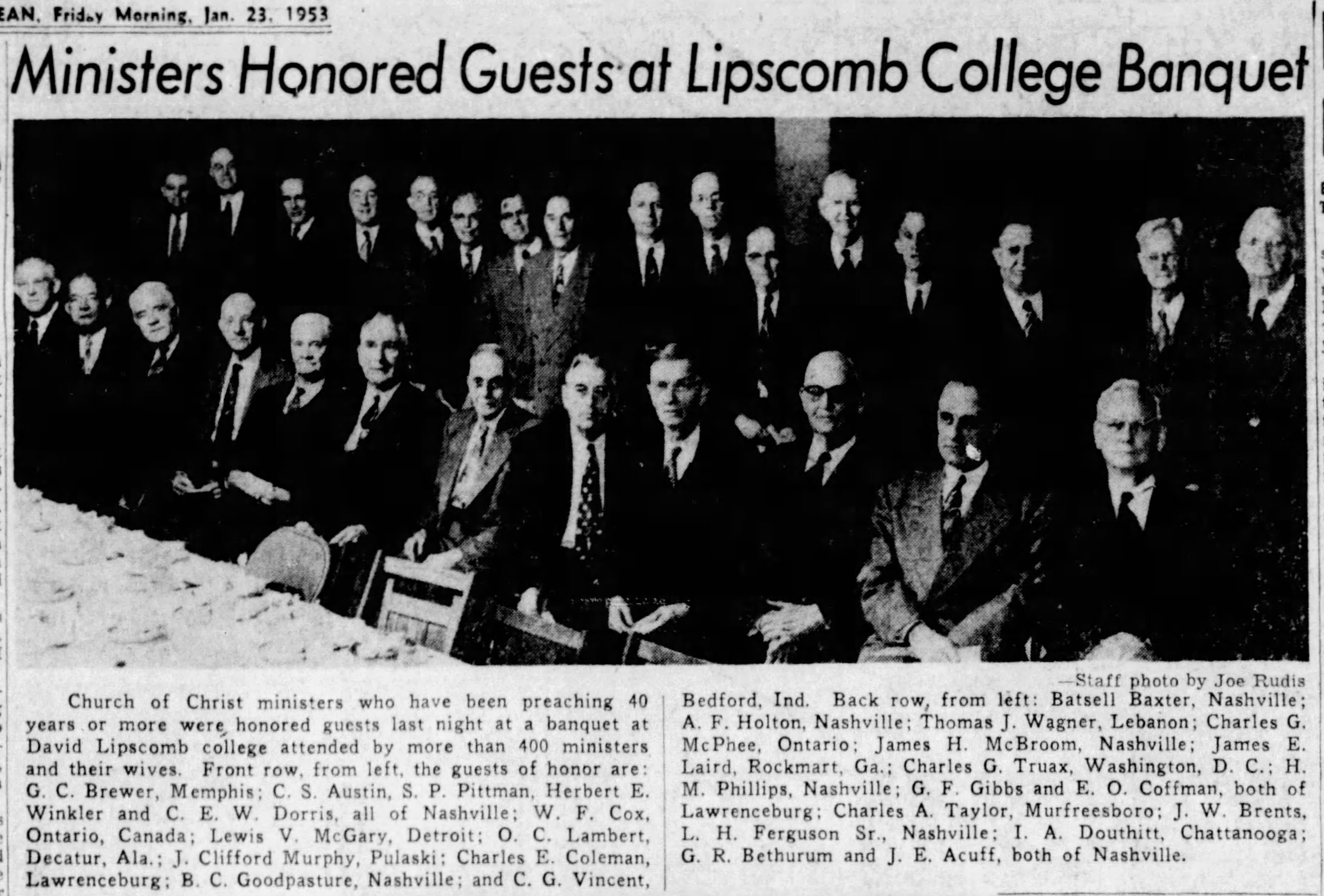
The Tennessean, Nashville, TN, Friday, January 23, 1953, p.41
Note: Click on photo to zoom in. Brents is locate in back row, fifth from the right.
![]()
Directions To Grave
Woodlawn Cemetery is located south of Nashville on Thompson Lane. Buried here are over 30 preachers of the gospel. The Brents are buried on the north side of the road. The GPS location below is the actual location in the cemetery of the grave of J. W. and Sallie Payne Brents.
GPS Location
36°06'48.8"N 86°45'31.9"W
or D.d. 36.113549, -86.758871
![]()
Sallie Payne Brents
March 8, 1899
November 7, 1941
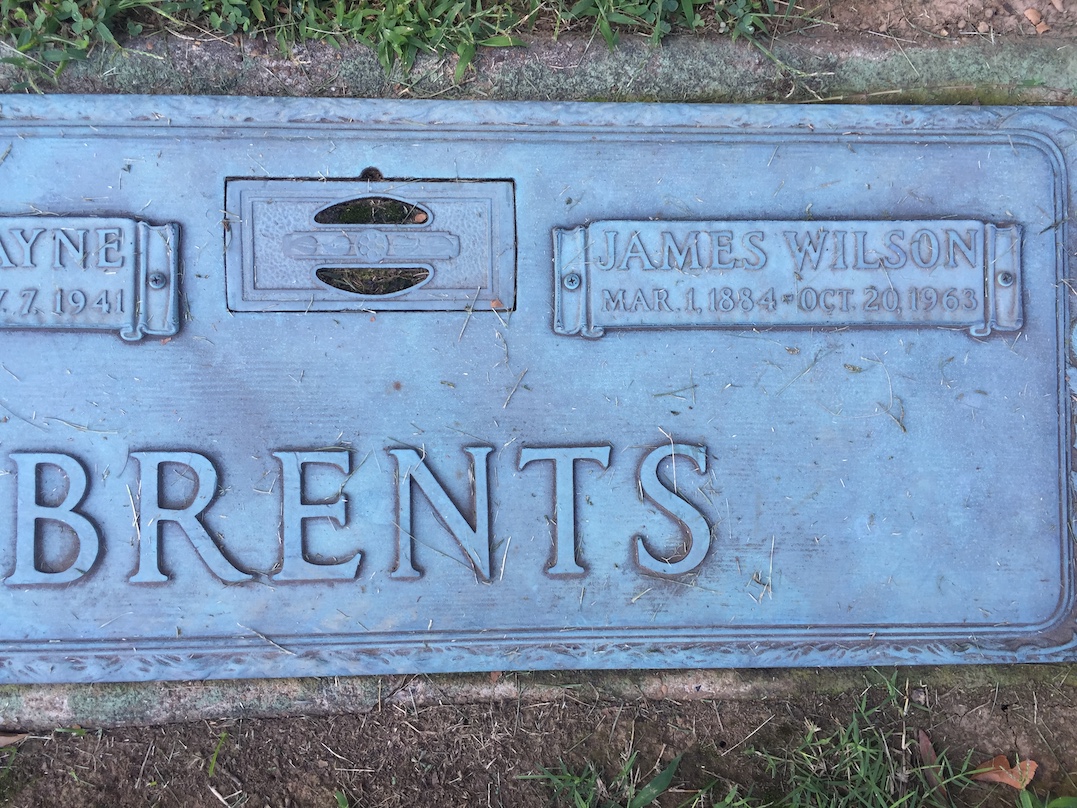
James Wilson Brents
March 1, 1884
October 20, 1963
![]()
Photos Taken 08.26.2016
Webpage produced 08.23.2020
Courtesy Of Scott Harp
www.TheRestorationMovement.com
![]()
